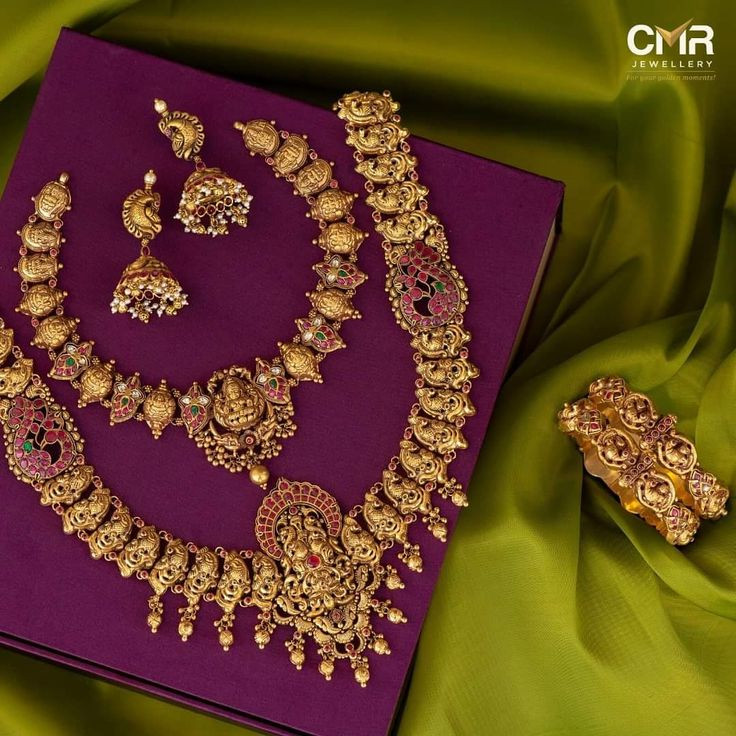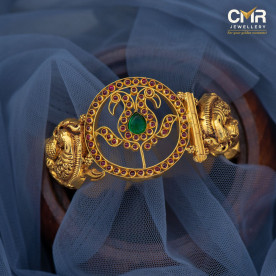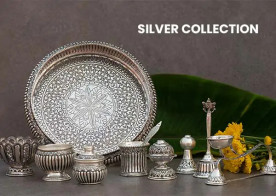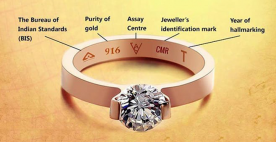For the jewellery lover, a piece or two of Nakashi jewellery is a must have in the wardrobe. Narrating a tale of rich opulence, Nakashi jewellery is said to narrate tales of the divine and showcase India’s rich history. A prominent style of jewellery from South India, this is also known to be one among the most popular techniques in the region. Read on to know all about the making of Nakashi jewellery, and choose an exquisite piece for yourself.
What is Nakashi jewellery?
Known to have been around since ancient times, Nakashi jewellery involves showcasing rich artisanship on thin sheets of metal. This technique involves pushing out metal to create varied designs. Handcrafted to perfection, every piece is unique and involves a high level of artisanship. Also, Nakashi or Nakshi jewellery usually showcases the rich elements of Indian mythology and divinity interlaced with the beauty of flora and fauna. A must-have in the bridal trousseau, and a perfect complement to rich silk sarees, Nakashi jewellery is often crafted in gold, silver and a few other metals.
Tracing the origin of Nakashi jewellery
The earliest references to Nakashi jewellery may be noted during the times of the Greeks and Romans. History indicates that they would use this style to craft not only their gold and silver jewellery but also used it to make bronze and tin sculptures as well. The earliest examples of Nakashi or Nakshi jewellery in India date back to the Indus valley civilization, where pieces of gold jewellery filled with lac, jewellery moulds and other such artefacts were uncovered.
With this work having travelled to other parts of the world over time, even the Buddhist writer Asvaghosha mentions it during the 1st century AD. Also, the throne at Vijayanagara in Hampi, Karnataka is noted to have showcased this work. With India’s knowledge of metallurgy much advanced in those years, jewellery was perhaps one of the simpler examples of the work they were capable of.
The technique of making Nakashi
Handed down to us since the ages, the technique of Nakashi jewellery is elaborate and time taking. With the end result being as grand as it is, it does take exquisite skill, patience and a high level of workmanship. The making of Nakashi jewellery usually involves the following steps:
- Sketching a design: A grand example of rich opulence, each piece of Nakashi jewellery is a canvas for the skilled artisan. So first of all, the jewellery designer creates a rough sketch of the design and piece of jewellery to be created. This sketch is further worked upon.
- Making thin sheets: In the next step, the metal of gold or silver is beaten into thin sheets. The metal thus takes the form of a flat canvas for the artist to design upon.
- Transferring the design: Next the artisan transfers the desired image or design onto the sheet. This could be done through the processes of stamping or moulding. Complex techniques of carving or engraving the design may be taken up as well. The sheet is then delicately hammered out to show the outline and major details.
- Embellishing: Now, the artisan uses skill to add the decorative elements that further embellish the piece and make it unique. This is done by using a range of engraving and etching tools. With all minute details taken care of, the finished design is filed to perfection.
- Finishing: Once all the detailing on the piece is done, the excess sheet that is left is cut out. While this may seem like a simple and straightforward process, it takes time and patience, as the artisan needs to be careful not to cut out any detail. Finally, a thin sheet of gold or silver is attached to the back of the crafted piece. Only a tiny hole is left, while the rest of the piece is carefully sealed.
- Adding lac: Now, lac is poured into the jewellery piece, to ensure that the design holds and the piece gains strength and sturdiness.
- Putting it together: When large pieces of such jewellery are crafted, such as an elaborate choker set, then the entire necklace is broken down into simpler components, with each being treated as one unit. Once each element is completed, it is given a uniform polish, such as an antique polish to create the desired look. Finally, the whole set is put together by the artisan.
At CMR Jewellery, blank metal sheets come alive in exquisite designs and grand displays. If choosing a piece that is close to your heart then pick from our rich repository of legends and epics, Gods and Goddesses and find a prominent piece of Nakashi jewellery just for you.











Validate your login
Sign In
Create New Account